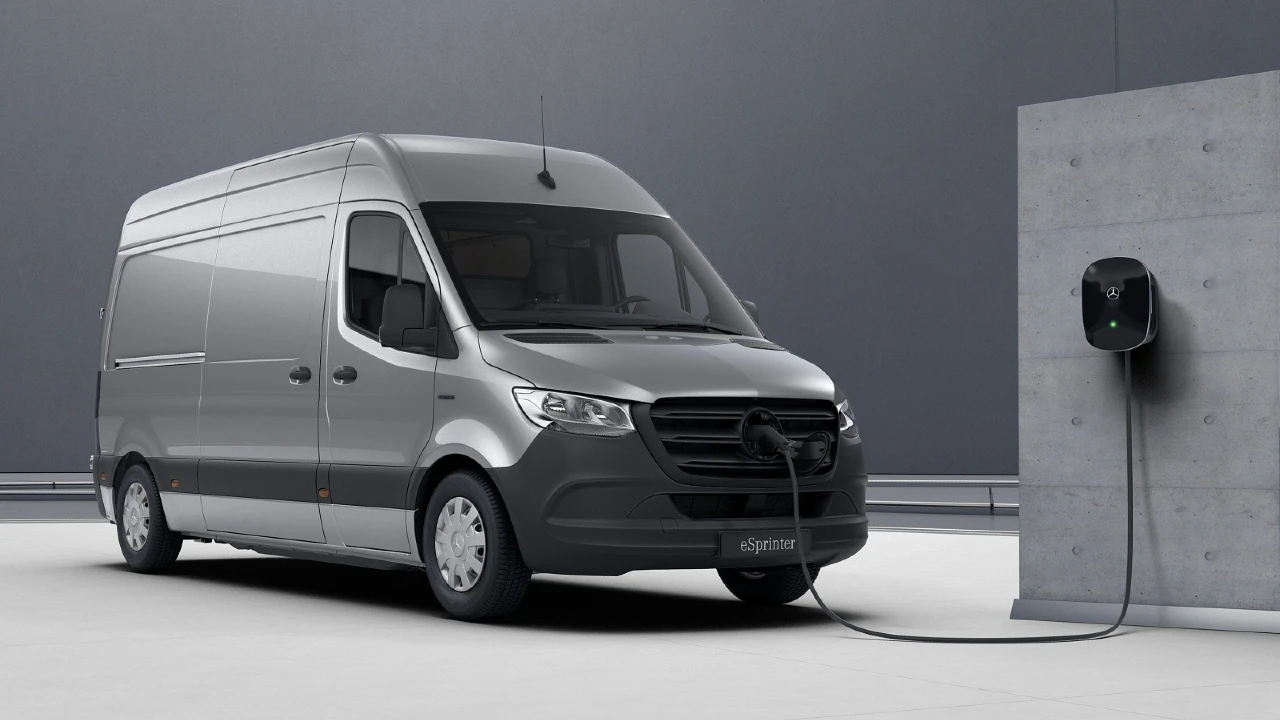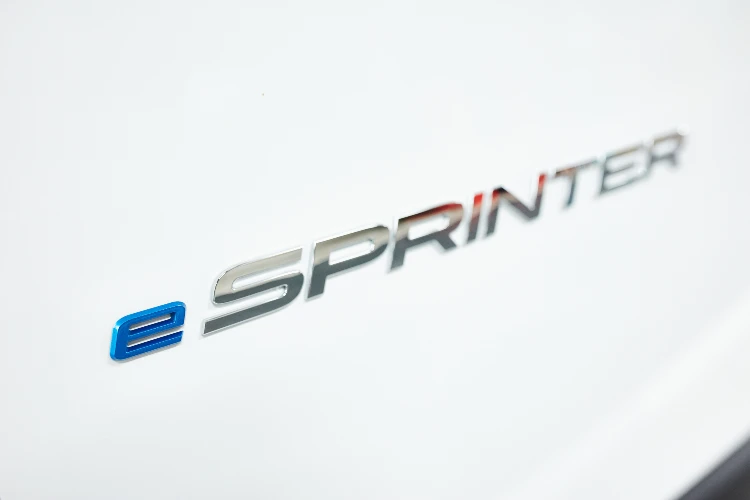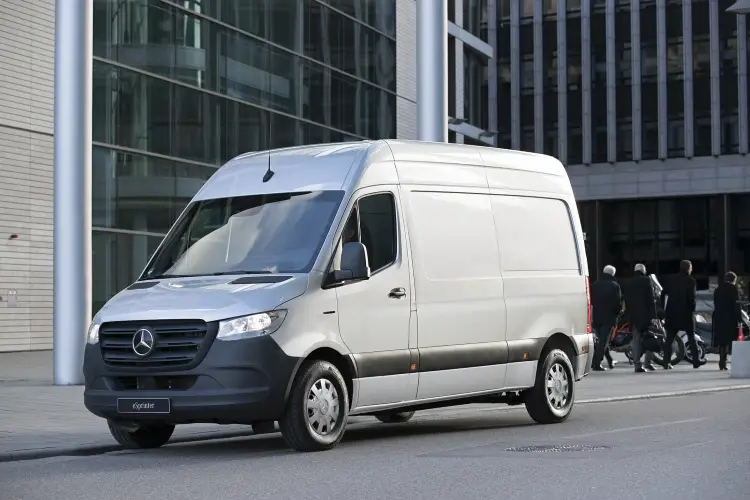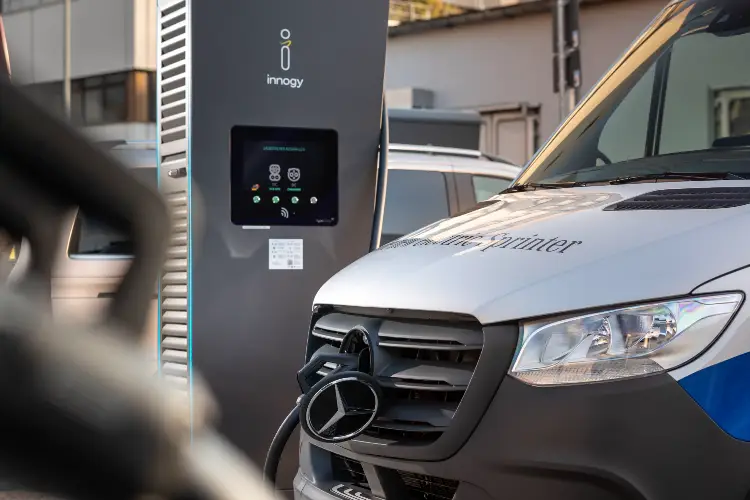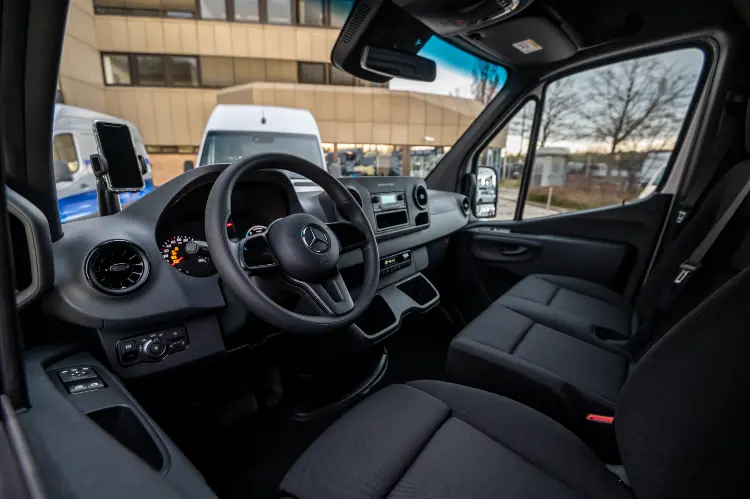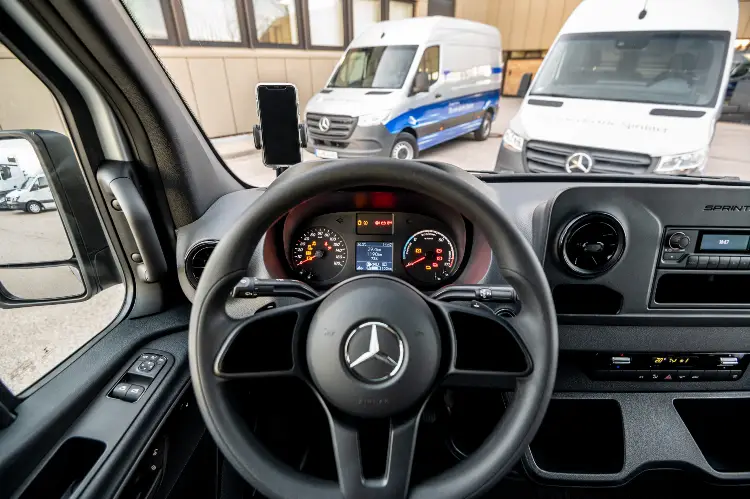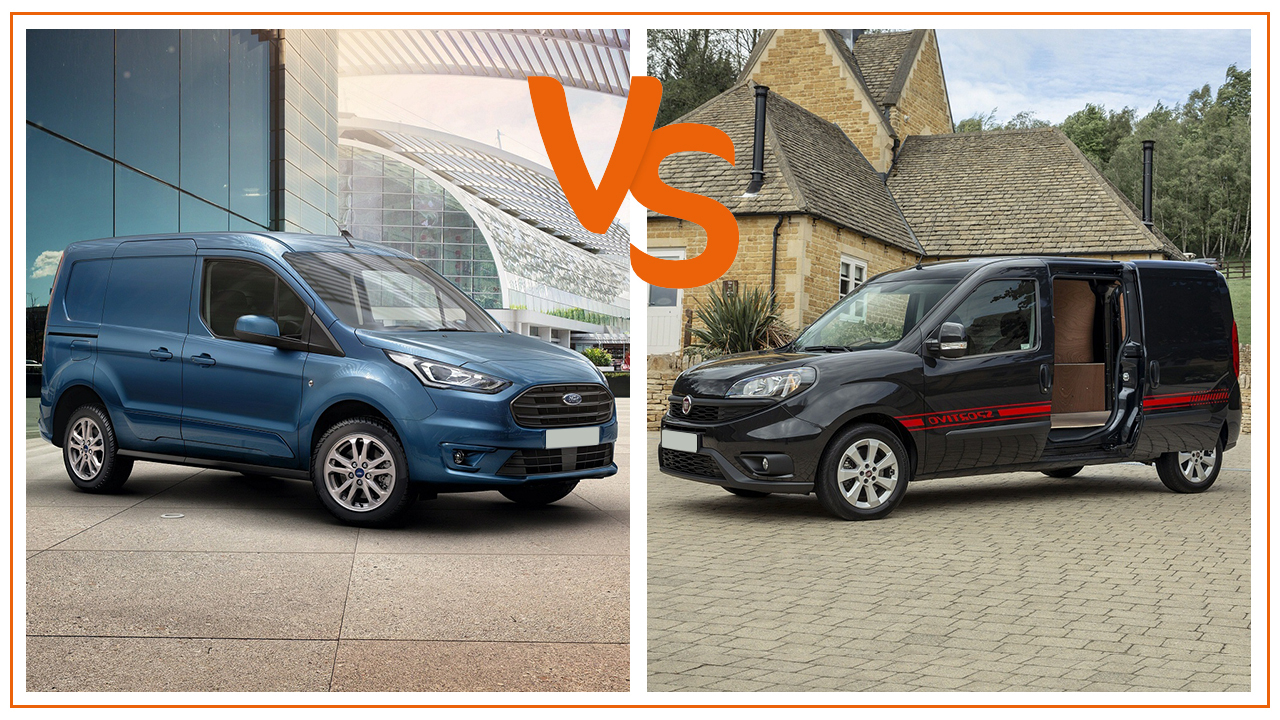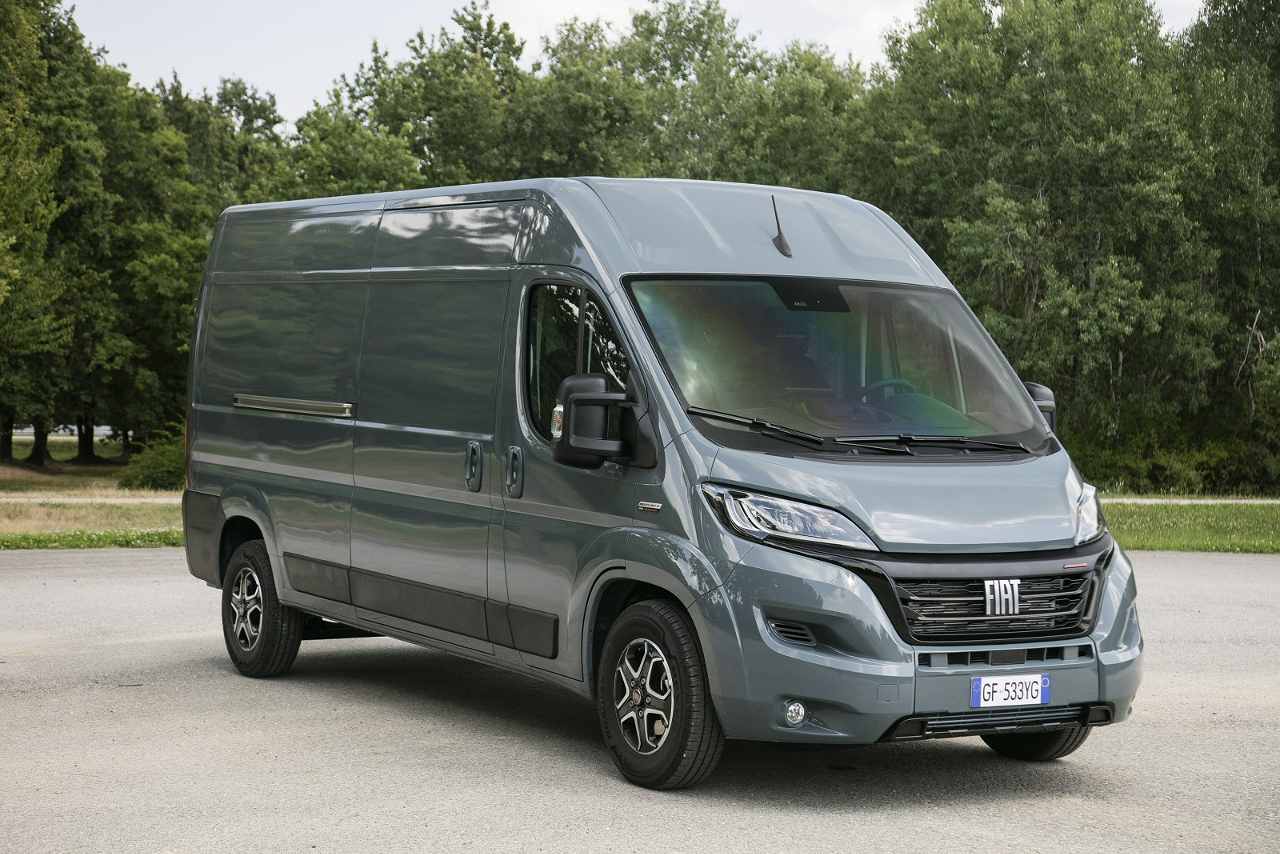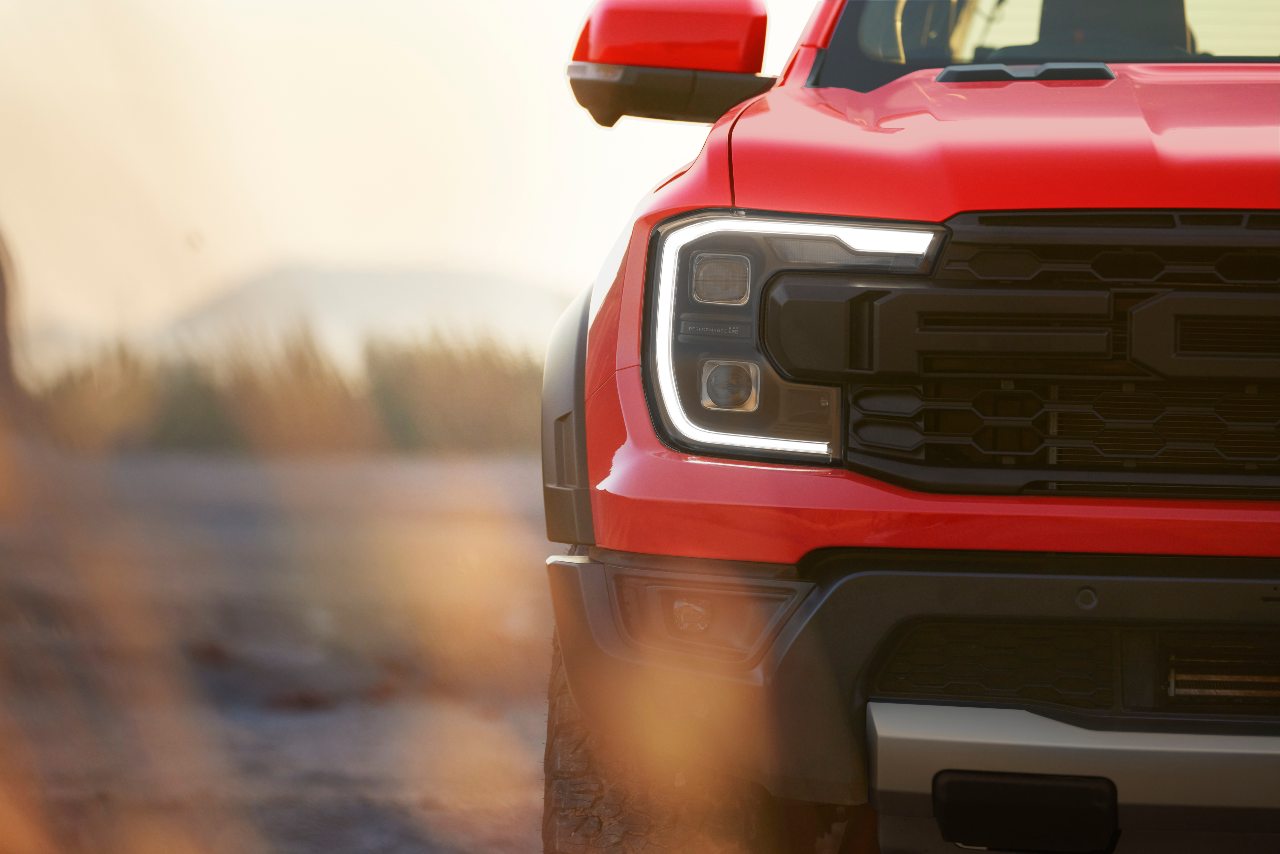By Tom Roberts
The Mercedes Sprinter has been around for over 27 years, quickly gaining a reputation for reliability and build quality. Over the years, it has become a favourite for fleets operating parcel delivery vehicles, as well as small businesses who wanted the reassurance and dependability offered by the 3 pointed star badge.
In the UK, the van struggles to match the sheer volume of registration figures the Ford Transit brings, but you’ll find in Europe, dealers shift the van in huge numbers. Vanarama’s van expert Tom Roberts takes a look at the transition from Mercedes dependable Sprinter to their newest electric addition, the e-Sprinter.
Introduction To Electric
There are challenges that electrification brings to manufacturers, particularly in large vans.. Battery packs are heavy, reducing the available payload, and a fully laden 3.5 tonne GVM (Gross Vehicle Mass) van takes a lot more energy to move than a medium sized van weighing 700 or so kilograms less. Getting the balance right between payload and range is a nightmare, especially when trying to keep the appeal to the high mileage courier market.
Due to these challenges, Mercedes have made it easy for themselves and their customers, offering only one van in electric form.
The e-Sprinter comes in a relatively short wheelbase L2 model, with a low H2 roof. There’s only 1 battery pack option, and a single trim level. Simple.
What Are The Dimensions and Weights Of The E-Sprinter?
Twin-rear doors and a large single-side loading door give access to the 11 cubic metres of loadspace. Load length is a decent 3397mm (Sprinter vans are generally longer than competitor equivalents), a height of 2079 mm means there’s standing room (for most of us), and for those where the width is critical, the e-Sprinter 1787 mm isn’t too shabby at all.
Due to the nature of the e-Sprinter being electric, payload is compromised. Unladen, this van is heavy, weighing in at 2769kgs. With a plated GVM of 3500kg, this leaves just 731kgs for loads, that’s less than offered by the much, much smaller Citroen e-Berlingo. Again, as this van is electric, it also means that towing isn’t permitted.
It’s unfortunate that Mercedes-Benz hasn’t taken advantage of the dispensation here in the UK which allows alternatively fuelled vans to operate at a GVM of 4250kgs without all the additional operating and licensing legislation that would normally apply at anything over 3500kgs. In theory, this would see the van having around twice the payload. Presumably with this piece of legislation being something unique to the UK market, the manufacturer didn’t consider the changes worth introducing for a single territory.
Motors, Batteries, Range and Charging
The pretty modest 85kW, 114hp electric motor powers the front wheels and is fuelled by a 55kWh battery pack. This combination gives an official WLTP combined range of 83 miles with the speed limited to a decent 75 mph. This is one to watch out for on other vans as speed limiters are often set low to maximise range. If a 50mph limit is selected, this range increases to 96 miles.
The issue here is that these figures will be tough to achieve in real-world driving, and as you’re not going to want to risk running out of charge completely the numbers are chipped away at both ends. Mercedes issue a pre-emptive strike in the brochure to counter any customer objection, quoting a statistic which suggests that the average commercial vehicle in Europe covers less than 62 miles a day.
The eSprinter has 4 modes of ‘recuperation’ – the process where energy generated when the van is slowing down is added back into the battery pack. Selectable in the cab, D- gives maximum recuperation, and the fastest deceleration, so much so that the brake lights are illuminated. D mode reduces this ‘motor braking’ to the level you’d find in a diesel Sprinter. D+ drops the effect further and D++ eliminates it completely at the expense of range.
Charging time from a standard 7.4kW wallbox charger is 8 hours, with a 10% to 80% charge from a 80kW DC public chargepoint being achieved in 30 minutes. If you’re worried about charging at home, the e-Sprinter also comes with an 8 metre long Type 2 charging cable.
What Standard Equipment Do You Get?
In the single Progressive trim level, eSprinter is equipped to a relatively modest level. There’s a DAB radio and Bluetooth connectivity (but no touchscreen), a heated driver’s seat and air conditioning. There’s a fair amount of safety tech, with active brake assist, adaptive ESP, attention assist, and crosswind assist all fitted as standard equipment. Double locks and a Thatcham approved alarm keep things secure and in the loadspace the floor has a resin coated plywood covering.
What’s The Warranty and Servicing Like?
The van is covered by a 3-year, 100,000 mile warranty, with the battery pack guaranteed to retain at least 70% of its capacity for up to 8 years or 160,000 kilometres. Roadside assistance comes courtesy of the manufacturers ‘Mobilo’ scheme, free of charge for up to 30 (yes, 30) years, subject to terms and conditions. Service intervals are variable, but with fewer moving parts and recuperation meaning less wear on brakes, costs should be significantly lower than the diesel equivalent.
Tom’s Takeaways
It’s easy to dismiss the eSprinter as being uncompetitive, particularly against the Ford E-Transit with its much greater payload, high-powered motor and excellent range. It’s certainly not for everyone but, where the van will be a viable proposition is in the ‘last mile’ delivery sector. A parcel courier with 100 drops but in an urban area will almost certainly be able to complete a day’s work before the van needs charging. The driver probably won’t be too concerned about performance, and the fact that the van is big, but not huge, means that it’ll be easy to manoeuvre in those tight city centre environments. Being emission-free, it’ll be able to enter any low or zero emission zones without restriction.
Coupled with the legendary Mercedes-Benz back up and dealer network ready to support the operator 24/7 in many cases, the eSprinter will be a tempting proposition for some of those who look beyond the headlines...

